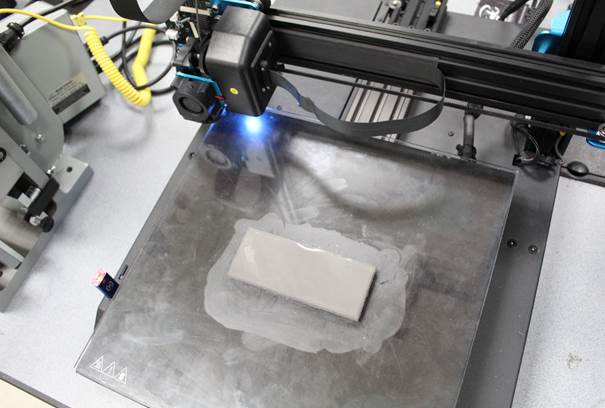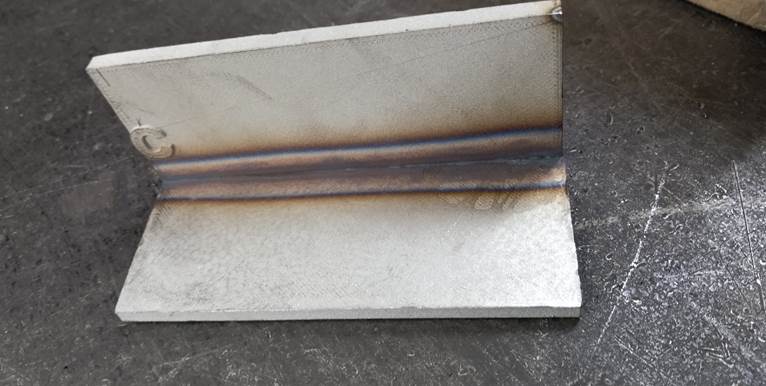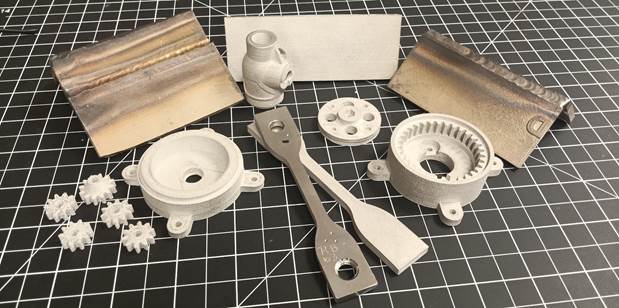Kentucky, USA’s Somerset Community College (SCC) has been successful in 3D printing numerous 316L stainless steel metal parts using modified budget desktop 3D printers. These parts were then TIG welded together with promising results, suggesting they could be used for industrial applications in the future.
The project is one of the first of its kind where metal parts that were 3D printed on sub $600 machines have been successfully welded together using traditional welding techniques.
Upgraded and customized FDM machines
The SCC AM department started off with several budget desktop FDM 3D printers, averaging less than $450 each, and customized and upgraded them with metal filament extrusion capabilities. The build plates were also modified with better adhesion to cater to the new material printing capabilities. The changes resulted in a total price tag of around $600 per printer.

Material manufacturer Virtual Foundry and chemistry expert BASF provided SCC with the metal infused filaments used in the new machines. Calculations were made to account for production issues such as shrinkage and the parts were 3D printed. Sintering experts DSH Technologies helped SCC debind and sinter the 3D printed parts.
Finally, the parts were transferred to SCC’s welding department where gas tungsten arc welding (GTAW), aka TIG welding, was used to weld several fillets and grooves. The fillets and grooves were applied to six metal 3D printed parts, with results being regarded as a huge success.

Karl Watson, Senior Welding Professor at SCC, explains: “The welds flowed very smoothly and we had very good penetration control. Because of the nature of 3D printing and research we have seen around the concept of welding such parts, I expected to see more porosity in the weld, but that wasn’t the case with these specimens at all. I am looking forward to doing some bend tests to determine the potential malleability as well as welding other samples using SMAW, GMAW, and FCAW.”
Initial testing of the parts has resulted in hardness values slightly less than standard 316L, although microscopic inspection after finishing work has not seen any inconsistencies so far. Watson also discovered that the heat dissipation during welding was higher than that of standard 316L stainless steel.
Next steps for SCC
SCC now aims to bring this budget metal 3D printing technology to select companies and academic institutions in Kentucky. The college will be providing training workshops on the set-up and assembly of their low cost machines.
The work is funded by the Kentucky National Science Foundation (NSF) EPSCoR (or Established Program to Stimulate Competitive Research) grant, titled Kentucky Advanced Partnership for Enhanced Robotics and Structures.
Eric Wooldridge, Director of SCC’s Additive Manufacturing program, stated: “Being able to bring truly low cost metal 3D printing and advanced product design directly to schools and colleges across Kentucky is a chance of a lifetime opportunity for us, and we are very excited to get started.”
Once testing and safety preparations are complete, SCC will be selecting training sites for instructors to begin implementing the technology into Kentucky’s workforce.
Wooldridge explains, “When you look at all the big investments in additive manufacturing by the aerospace and automotive industries, the announcements from the Department of Defense, and the number of products already on the market that are produced using 3D printing technology, practical skills in this technology are what any advanced workforce needs. Having a state-wide workforce that is capable of 3D printing metal parts at a fraction of the typical cost; that’s just an innovation revolution waiting to happen.”

SCC has previously received a grant from NSF for its additive manufacturing platform to aid in the education and training of the Kentucky workforce. Elsewhere, in Germany, researchers have previously examined the welding of additive manufactured parts to create individualized series components. With more research and funding going into the welding of 3D printed metal parts, the fusion of new and old technologies could prove to have major industrial implications.
The nominations for the 2020 3D Printing Industry Awards are now open. Who do you think should make the shortlists for this year’s show? Have your say now.
Subscribe to the 3D Printing Industry newsletter for the latest news in additive manufacturing. You can also stay connected by following us on Twitter and liking us on Facebook.
Looking for a career in additive manufacturing? Visit 3D Printing Jobs for a selection of roles in the industry.
Featured image shows stainless steel parts produced on a desktop 3D printer. Photo via SCC.


